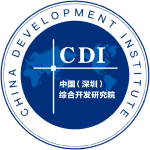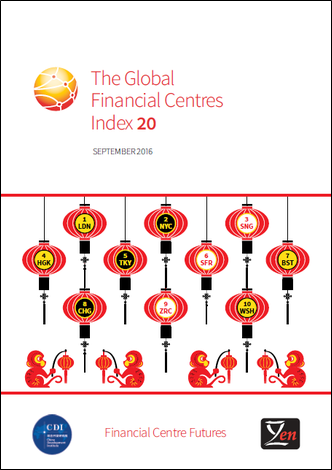Authors
Mark Yeandle
Published by
Long Finance & Financial Centre Futures (September 2016), 56 pages. Produced by Z/Yen in Partnership with CDI.
Share on social media:


The Global Financial Centres Index 20
The GFCI provides profiles, ratings and rankings for financial centres, drawing on two separate sources of data – instrumental factors and responses to an online survey. The GFCI was created in 2005 and first published by Z/Yen Group in March 2007. The GFCI is updated and republished each September and March. This is the twentieth edition (GFCI 20). 103 financial centres are actively researched. 87 financial centres appear in GFCI 20. The remaining 16 ‘associate centres’ will join the index when they receive sufficient assessments.
Instrumental factors: previous research indicates that many factors combine to make a financial centre competitive. We group these factors into five broad ‘areas of competitiveness’: Business Environment, Financial Sector Development, Infrastructure, Human Capital and Reputational and General Factors. Evidence of a centre’s performance in these areas is drawn from a range of external measures. For example, evidence about the telecommunications infrastructure competitiveness of a financial centre is drawn from the ICT Development Index (supplied by the United Nations), the Networked Readiness Index (supplied by the World Economic Forum), the Telecommunication Infrastructure Index (supplied by the United Nations) and the Web Index (supplied by the World Wide Web Foundation). 101 factors have been used in GFCI 20.
Financial centre assessments: GFCI uses responses to an ongoing online questionnaire completed by international financial services professionals. Respondents are asked to rate those centres with which they are familiar and to answer a number of questions relating to their perceptions of competitiveness. Responses from over 2,400 financial services professionals were collected in the 24 months to the end of June 2016. Of these 1,852 provided 23,006 valid financial centre assessments which were used to compute GFCI 20, with older assessments discounted according to age. More details of the methodology behind GFCI 20 can be found here.




